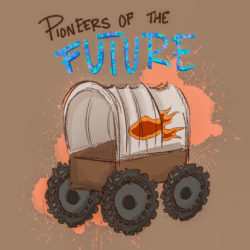
After the Saints were forced to leave Nauvoo, Illinois, in 1846, Redick Allred enlisted in the Mormon Battalion. This willingness to make sacrifices for his Church would be a hallmark of his life. When asked in 1852 if he would serve a mission to the Sandwich Islands (known today as the Hawaiian Islands), he didn’t hesitate. He served for three years.
In 1856, Redick was living in Kaysville, Utah. When he heard that two handcart companies were late on the plains and in peril for their lives, his heart went out to these people. “I responded to a call [from] the brethren to assist them,” he wrote in his journal, as they were “likely to be caught in the mountains in the snow without provisions and the necessary clothing.”
Redick Allred borrowed a pony and left on October 7 as part of George Grant’s rescue company. The next day, Redick took cold and suffered “a severe pain in my breast that lasted one month that was almost like taking my life.” Even as he suffered, he pressed forward and fulfilled some of the most difficult assignments of the rescue effort.
On October 18 the rescuers crossed South Pass and camped on the Sweetwater River. “It snowed and was quite cold,” Redick wrote. When most of the rescuers continued east the next day, George Grant asked Redick to remain in camp and establish a station to help the handcart companies as the other rescuers brought them through. Redick was given charge of a small group of men, wagons, and animals at this station. He butchered some of the animals and kept the meat frozen in the bitter cold.
On October 23, Redick received an express from William Kimball telling him that the rescuers had found the Willie company and asking him to hurry forward with assistance. Redick left early the next morning, leading six supply wagons 15 miles to the Willie company’s camp. “I found some dead and dying,” he observed. “The drifting snow . . . was being piled in heaps by the gale & [they were] burying their dead.” Redick and his men did all they could to help. The next day they all moved ahead to Redick’s station near South Pass.
George Grant had originally told Redick Allred that he could return to Salt Lake City “with the first train.” But Captain Grant sent word with William Kimball that Redick should remain at his station until the later companies came through, “as their lives depended upon it.” It was a long, tedious wait. During that time, two men tried to induce Redick to go home, but he refused, committed to do his duty.
Redick Allred remained in this camp for a month before George Grant finally arrived with the Martin company on November 17. When George Grant saw that Redick had remained faithful to his assignment, he saluted him with, “Hurrah for the Bull Dog—good for a hang on.” The next day, Redick broke camp and “set out for the city with this half-starved, half-frozen, and almost entirely exhausted company of about 500 saints.” By the time he arrived home, he had lost his toenails to the frost. “Thus ended one of the hardest & most successful missions I had ever performed,” he wrote.
Redick Allred was a farmer for most of his life. He also loved serving in the Church and community. He died in 1905 in Chester, Utah, a town where he had served for 10 years as bishop. He was a patriarch in the Church at the time of his passing.

 (Picture titled “As Sisters in Zion” by William Whitaker of Julia and Emily Hill.)
(Picture titled “As Sisters in Zion” by William Whitaker of Julia and Emily Hill.)